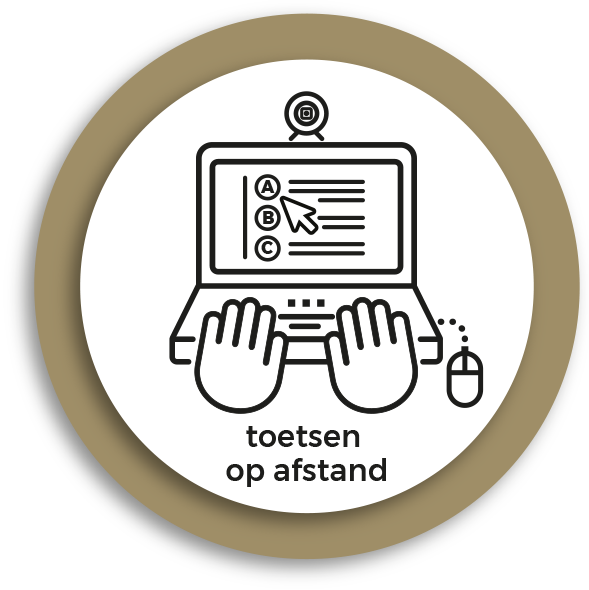Description
An obvious method for assessing knowledge is a multiple-choice exam with open-ended questions. On campus, this type of exam is often taken in a large sports hall or lecture theatre.
This form of online assessment has some clear advantages, because the answers are standardised and can be, at least partly, marked online. It also resolves the problem of illegible handwriting. Online assessment also means that the exam can be taken at any time and location. You therefore do not have to arrange a room and it costs students less in termsof time and travel expenses.
There are also other options for assessing knowledge at the medium scale, such as a group presentation or a group oral exam.
As well as knowledge reproduction, this also tests oral and presentation skills. A presentation can also be used as an overview or summary of a project rather than a longer report, and requires less marking time. Another benefit is that it reduces opportunities for cheating. Although these assessment methods have traditionally taken place in a face-to-face setting, time, monetary and space considerations (for both the educational institution and the student) can mean that the assessment is done online.
How
Assessing knowledge in an online exam is more susceptible to cheating. Measures therefore need to be taken to counter this. Online assessment software can provide tools for preventing cheating as much as possible. For example, the software may turn off certain functions on the computer so that students cannot open an external web page.
Online proctoring can also be used. Live proctoring means that an examiner is present in the video conference to monitor students in real time, for example via a webcam or telephone. Recorded proctoring means that video recordings are made, some of which are selected at random for monitoring. Automated proctoring uses special software that automatically checks anything that is considered to be unusual, such as an unexpected movement or sound. More information on online proctoring can be found here.
Another way to prevent cheating is to present questions in random order or to give different students different questions. Item banks can be used to produce several versions of an exam with different sets of questions. You can find more information about this in the Guide to item banks. It is easy to present questions in random order using exam software.
The assessment of presentations and oral exams can take a lot of time. Moreover, oral exams are normally taken individually, and may therefore not seem to be an obvious choice. However, their assessment in a formative setting can be made easier by dividing students into groups and/or implementing peer feedback, in which students assess one another’s work. It may also help to have students record their presentations, so that you can assess them at a more suitable time and location.
Recommended assessment methods
Tips
Set a suitable time limit: too much time increases the risk of cheating, but too little time causes stress and reduces the validity of the exam results. See Van Berkel (1999) (in Dutch) for estimates of the time needed for different types of questions.
Emphasize the student’s ethical responsibility not to cheat.
Ensure good communication with the students.
- Be transparent about the online assessment process, so that students know what to expect. Let them know for example which personal details will be needed and what they will be used for, and what they need to have with them (e.g. a student card, telephone or camera).
- If online proctoring will be used, be clear about what the students can expect and what the rules are. Transparency about how the online proctoring will be implemented is essential. For more information, see the SURF online proctoring report: Surveilleren op afstand.
- You also need to let the students know about any technical requirements. At a minimum, students will need a stable internet connection. It is important to let the students know of any specific computer hardware requirements for the assessment software and to provide alternatives if this is not available.
Not every student has suitable living conditions with a quiet room to take an exam in. Where possible, offer an alternative, such as a room on campus that students can use.

